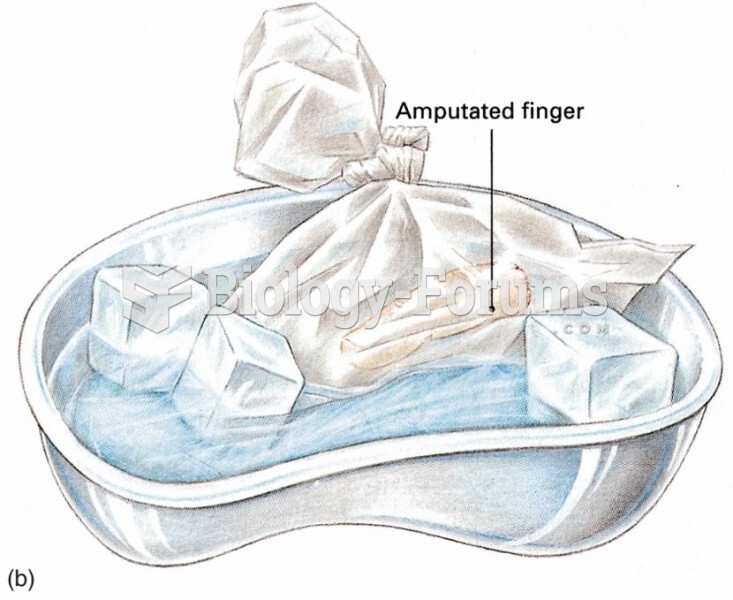|
|
|
Illicit drug use costs the United States approximately $181 billion every year.
For pediatric patients, intravenous fluids are the most commonly cited products involved in medication errors that are reported to the USP.
Many people have small pouches in their colons that bulge outward through weak spots. Each pouch is called a diverticulum. About 10% of Americans older than age 40 years have diverticulosis, which, when the pouches become infected or inflamed, is called diverticulitis. The main cause of diverticular disease is a low-fiber diet.
Glaucoma is a leading cause of blindness. As of yet, there is no cure. Everyone is at risk, and there may be no warning signs. It is six to eight times more common in African Americans than in whites. The best and most effective way to detect glaucoma is to receive a dilated eye examination.
Limit intake of red meat and dairy products made with whole milk. Choose skim milk, low-fat or fat-free dairy products. Limit fried food. Use healthy oils when cooking.
 Place one hand on the medial and one on the lateral thigh to begin horizontal stroking. Slide hands ...
Place one hand on the medial and one on the lateral thigh to begin horizontal stroking. Slide hands ...
 Deep effleurage to buttocks muscles using reinforced palm. Place one hand over the other to apply ...
Deep effleurage to buttocks muscles using reinforced palm. Place one hand over the other to apply ...
 Stretch the hip in lateral flexion. Bring the knee toward the chest. Place one hand on the shoulder ...
Stretch the hip in lateral flexion. Bring the knee toward the chest. Place one hand on the shoulder ...




